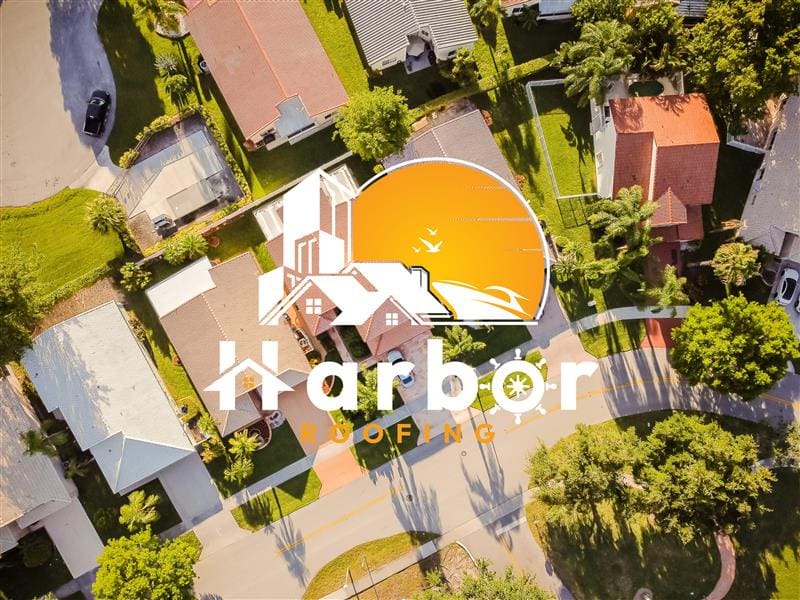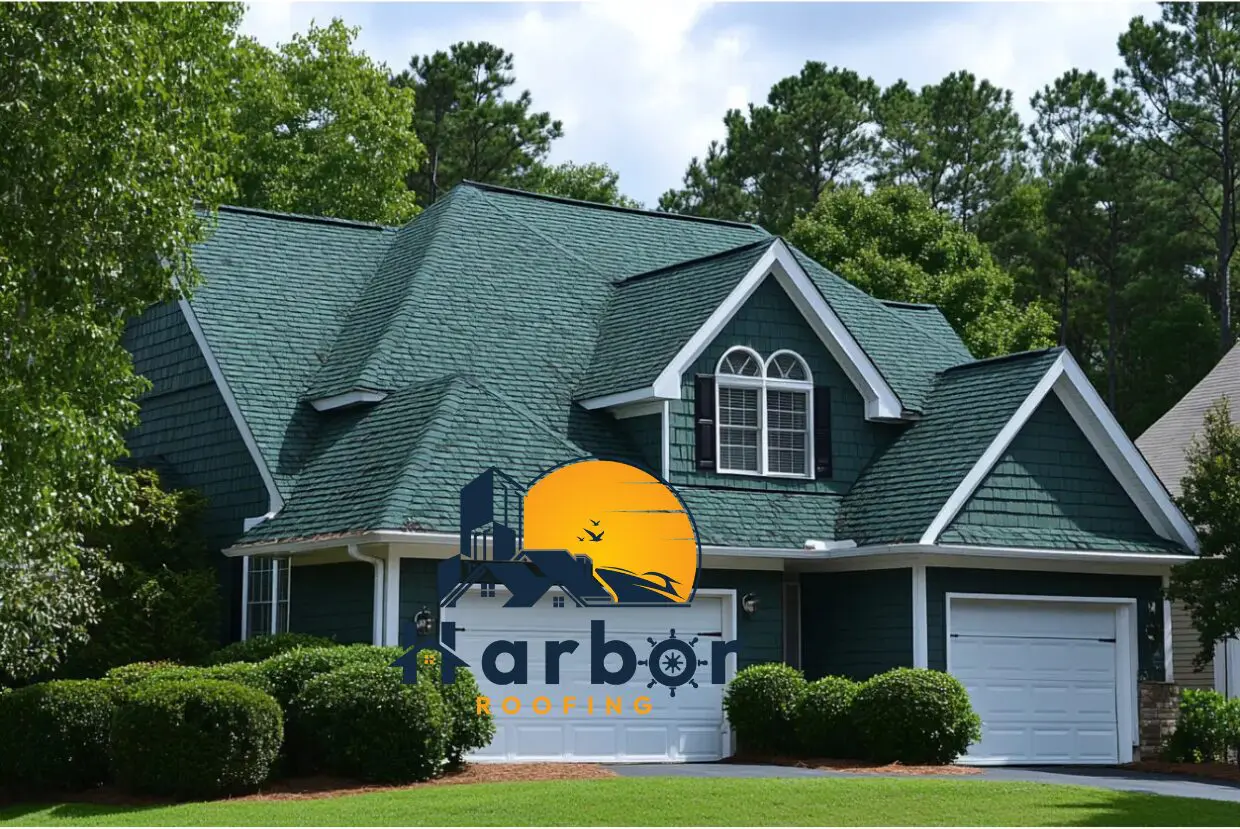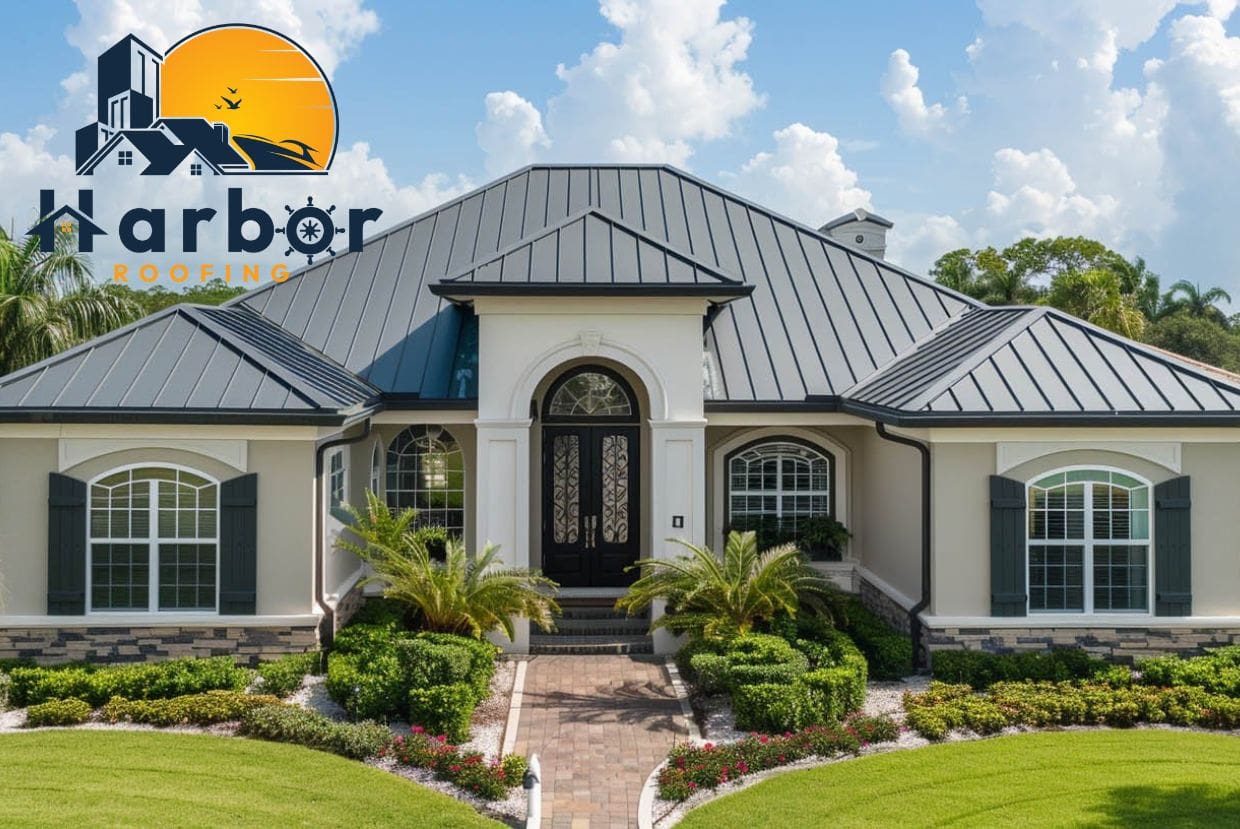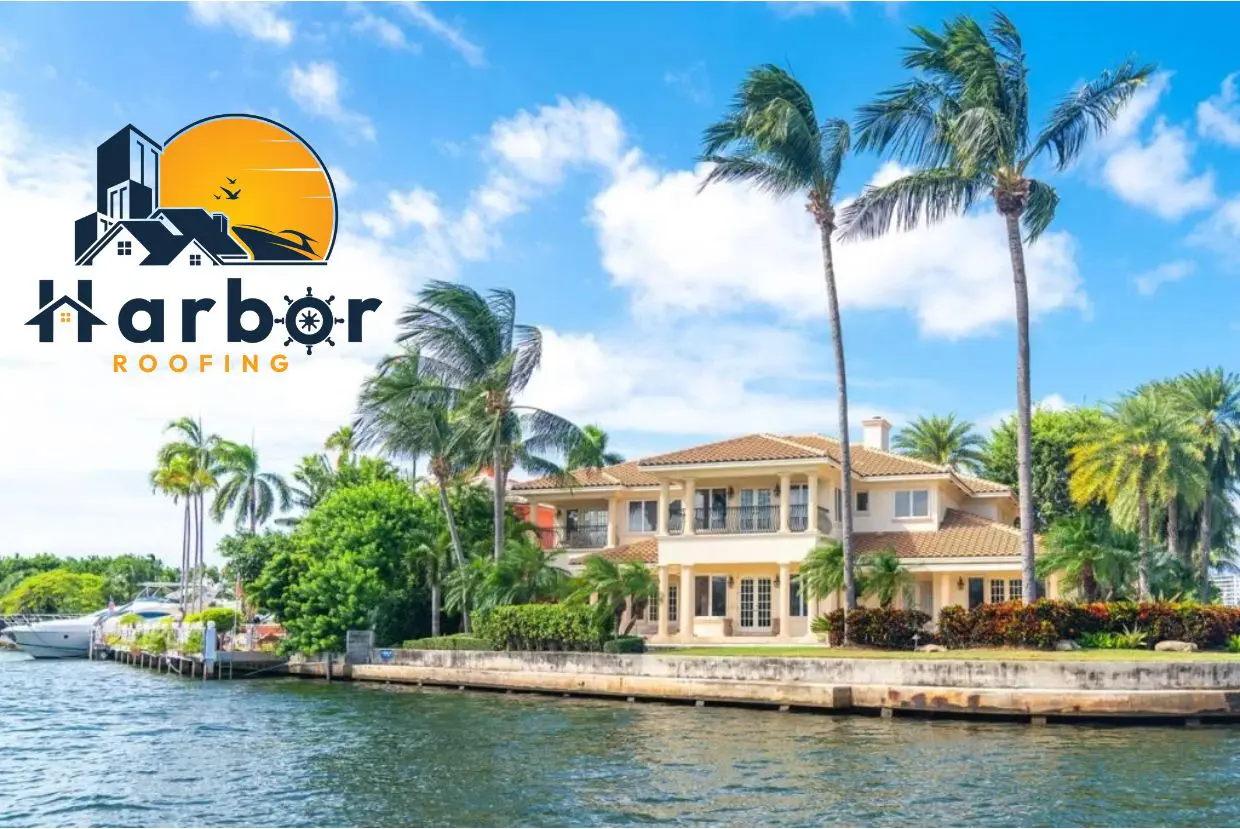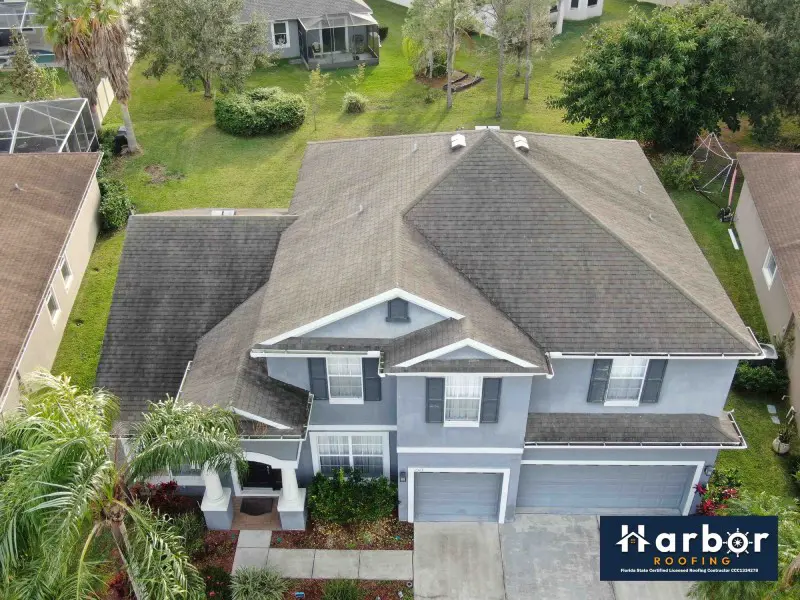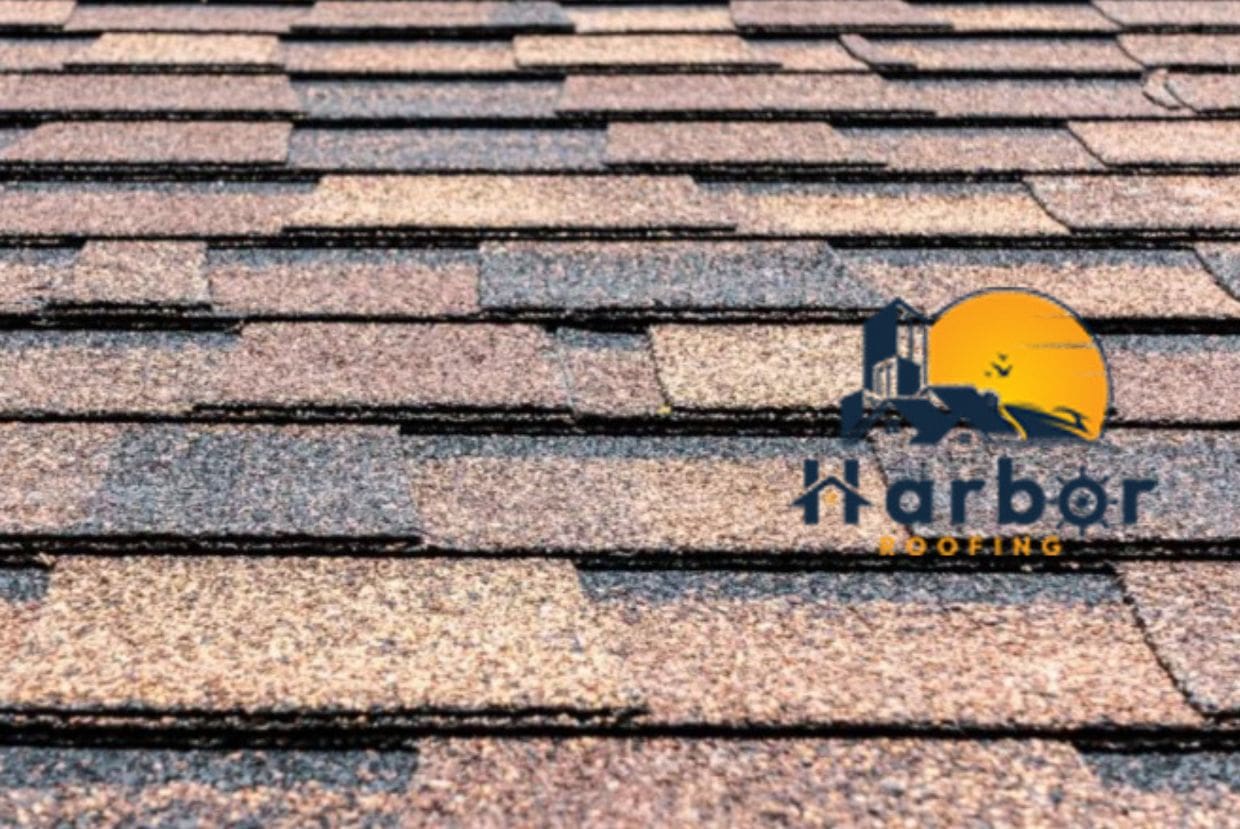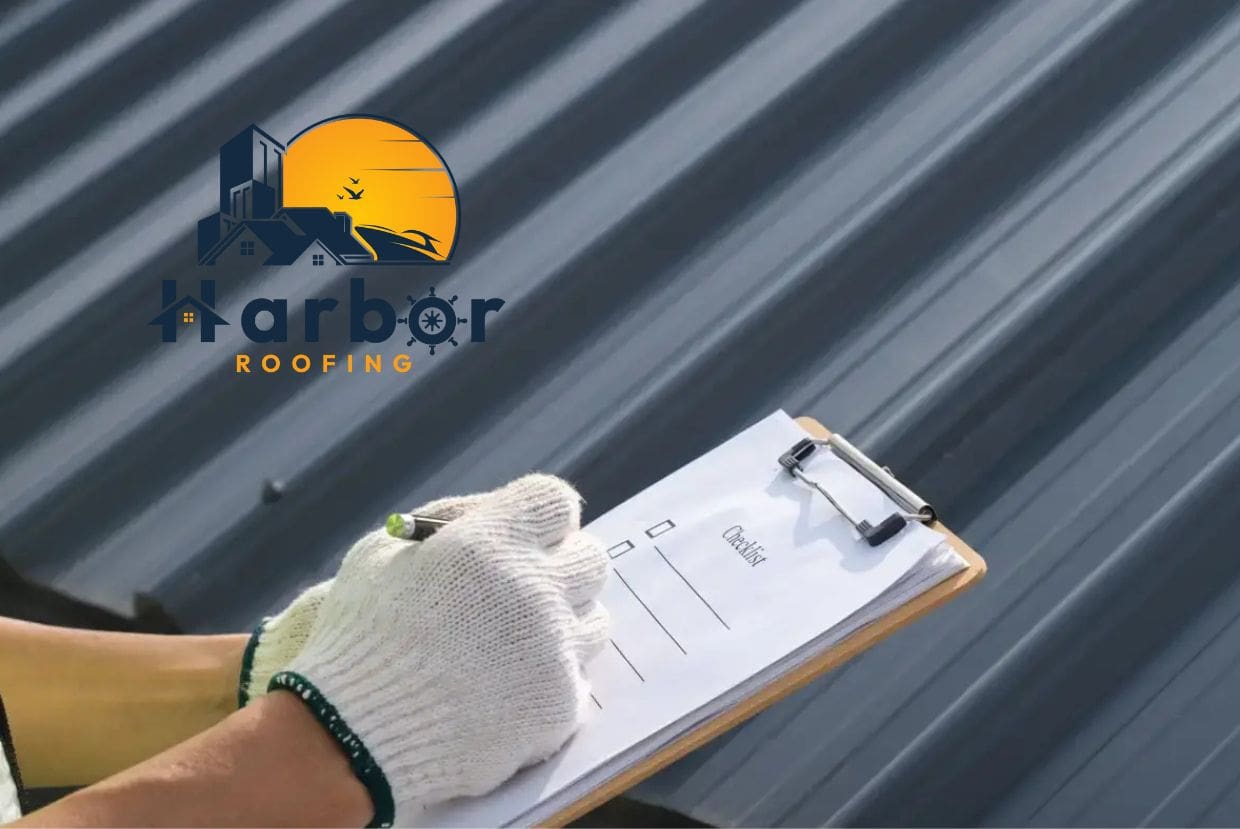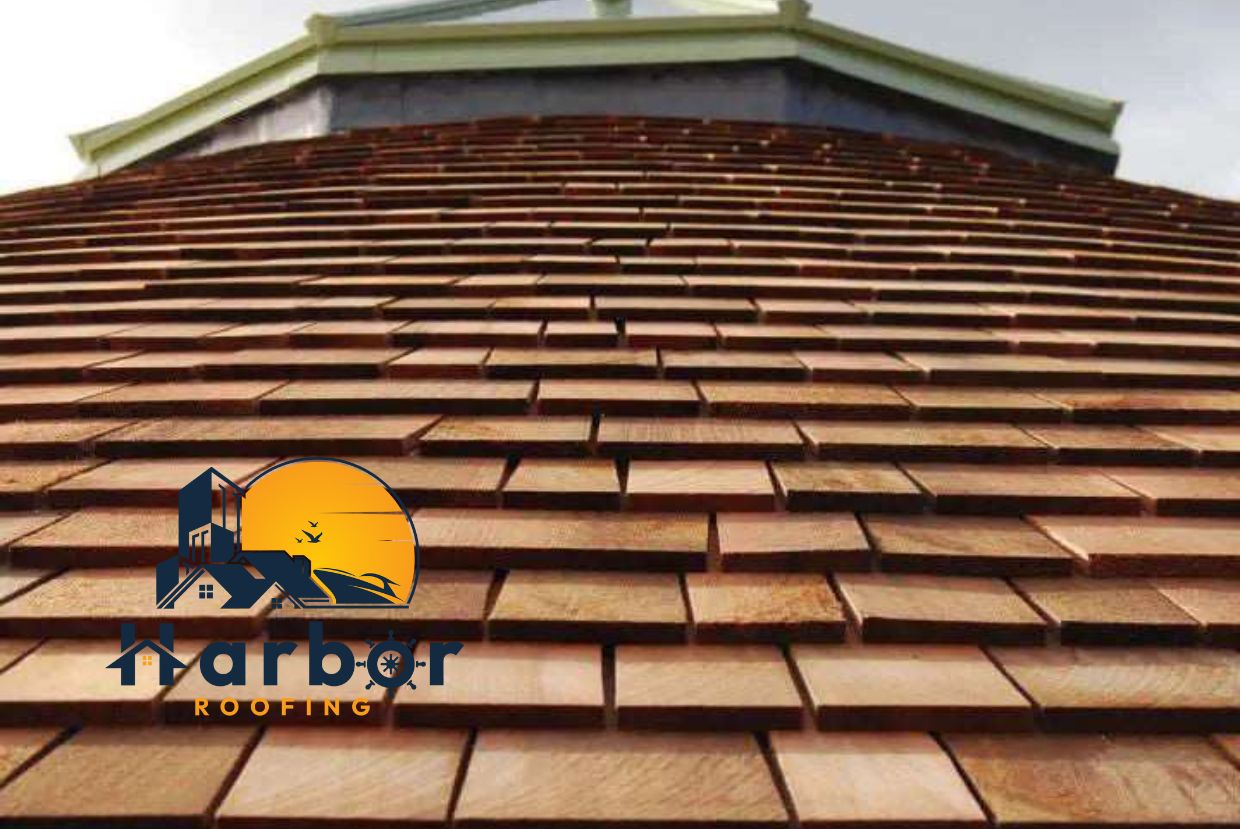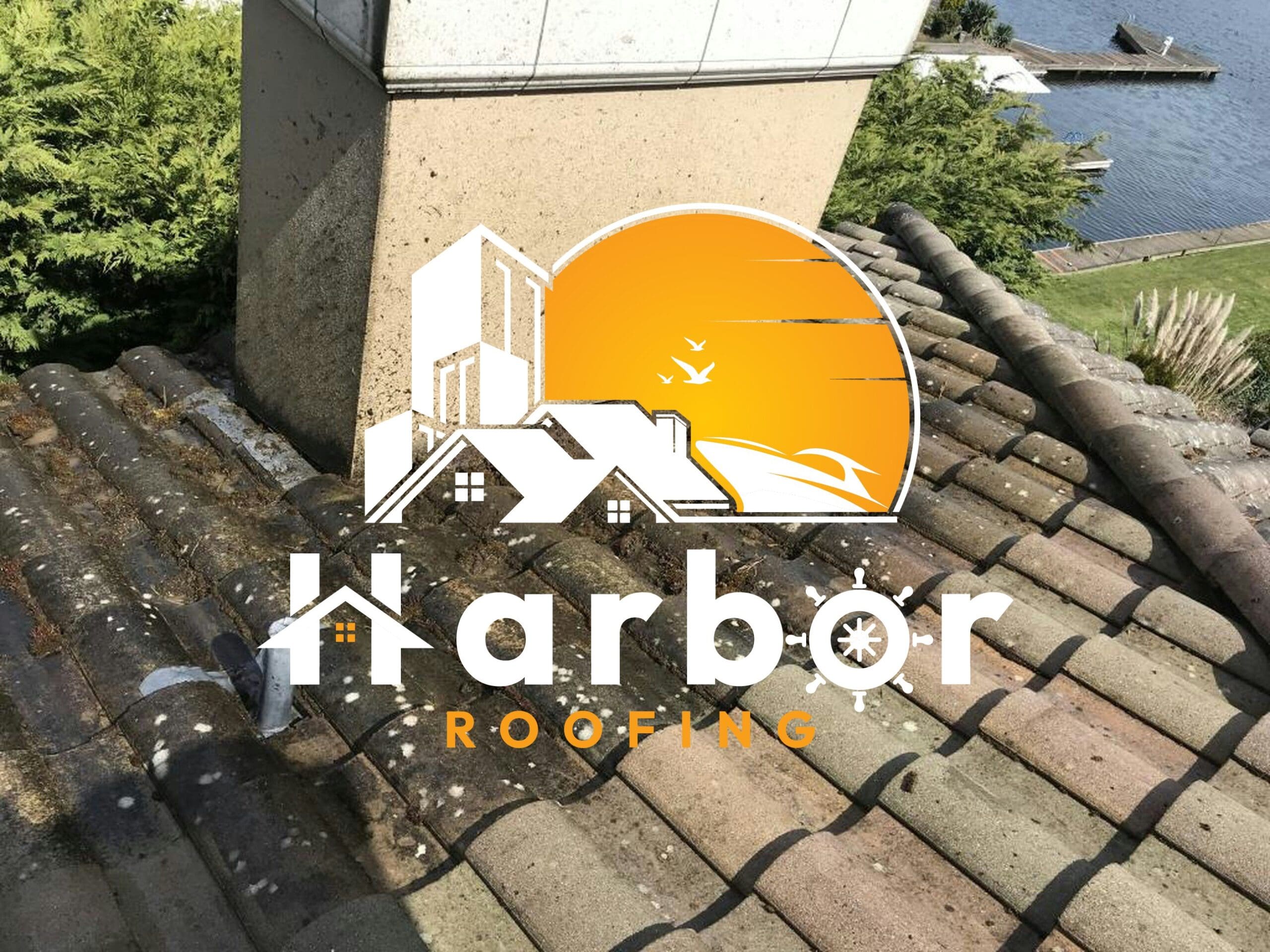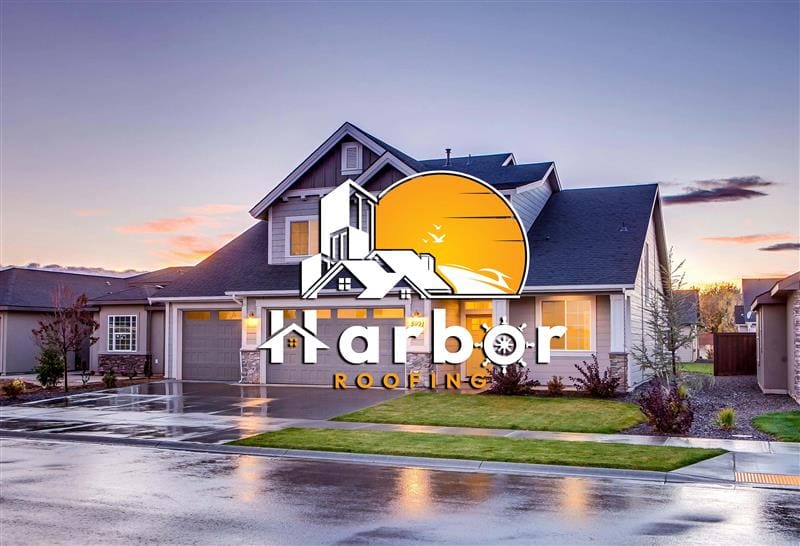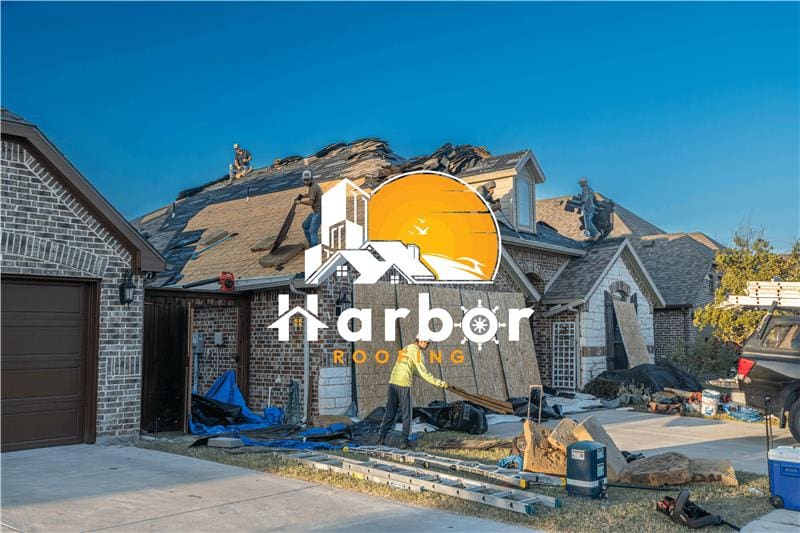Table of contents
Do you think your roof’s sole purpose is to repel rain? Not so fast. Your roof is the barrier against withering sun, astronomical energy costs, and water damage in Florida’s scorching temperatures. Enter roof coatings, often-overlooked but powerful heroes that can do much, much more than simply look pretty on your house.
These high-tech coatings reflect heat, extend your roof’s life by years, and keep indoor temperatures in check without overloading the AC. In this guide, we’ll look at the advantages, types, and real value of roof coatings, so you can determine if they’re right for you.
What Are Roof Coatings And How Do They Work
Protective Coating Fundamentals
Roof coatings are liquid-applied membranes that are meant to shield and prolong the life of your roofing system. Elastomeric, acrylic, silicone, and PVDF coatings are some of the most popular types. Each has unique advantages that suit your roof structure and Florida’s climatic challenges. Elastomeric and silicone, for instance, are used in waterproofing, whereas acrylic coatings are commended for their UV protection and affordability.
Moreover, these coatings form a smooth seal over the material that already exists, closing tiny cracks and blemishes. When cured, they are flexible and durable, able to withstand Florida’s blazing sun, wind, and day-to-day temperature fluctuations without cracking or degrading prematurely.
Solar Reflective Shield
One of the most impressive aspects of roof coating is its solar reflectance. Light reflective or light-colored coatings reflect a high level of sunlight, reducing solar heat gain. This can lower rooftop surface temperatures up to 50°F, keeping houses cooler on the inside.
Aside from their ability to reflect sunlight, coatings provide excellent UV resistance, protecting underlying materials from damage. This reduces aging and wear caused by thermal cycling, the day-to-day expansion and contraction of roof materials in response to temperature variations. By reducing this stress, coatings keep your roof strong over the long term.
Material Compatibility Guide
Roof coatings perform optimally on flat roofs, low-slope membranes, metal roofs, and built-up roof systems (BUR). Adherence and performance are contingent upon ideal preparation, such as cleaning and small repairs.
For Florida residents, coatings are particularly useful for metal and flat roofs susceptible to ponding water or UV stress. But not all coatings work with all roofs; selecting the proper formula makes all the difference for long-term performance.
Essential Benefits of Roof Coatings
Extended Roof Life
Roof coatings function as a defensive skin, protecting your roof from Florida’s toughest conditions. By filling cracks, keeping water away, and preventing UV damage, they stretch the life of most roofs by 10 to 25 years. This delayed need for roof replacement translates into fewer interruptions and more years between costly re-roofing endeavors.
They also prevent the degradation of the supporting roofing material, avoiding early degradation through thermal cycling, water penetration, or daily sunlight exposure. For aging roofs close to the completion of their lifespan, a coating can serve as a rejuvenation layer that maintains things in order for an extra couple of years.
Energy Efficiency And Cooling Savings
Florida residents endure a lot of abuse at the hands of the sun, particularly in the high-summer months. Roof coatings, and especially “cool roof” products, reflect 60 to 90% of solar radiation, greatly reducing roof surface temperatures.
This thermal reflectivity also means lower indoor heat gain, allowing HVAC units to work less and cool more effectively. Homeowners can experience as much as 40% savings on air conditioning bills, particularly for single-story or low-slope residences where roofs bear the brunt of the sun’s heat.
Waterproofing And Leak Prevention
Flat and low-slope roofs in Florida are especially susceptible to ponding water and storm-borne rain. Roof coatings seal seams, screw holes, and hairline cracks, creating a watertight barrier that prevents small problems from becoming large leaks.
Silicone and elastomeric coatings function particularly well in wet and rainy climates. They stretch with roof movement and resist mold or algae, making them perfect for all-year waterproofing and stopping long-term moisture damage.
Environmental And Economic Impact
By extending roof lifespan, coatings put off the requirement for complete tear-offs, keeping construction waste out of landfills. It’s a big win for green-conscious homeowners.
Roof coatings also reduce carbon emissions by increasing energy efficiency and cutting the need for cooling. By using fewer materials and less energy overall, they’re a sustainable, budget-friendly option that benefits both your wallet and the planet.
Types of Roof Coatings And Best Use Cases
Acrylic Coatings
Acrylic and elastomeric roof coatings are greatly utilized in Florida because they are resistant to UV, elastic, and affordable. These water-based coatings are easy to apply and reflect a high rate of solar heat, which helps reduce interior temperatures. Suitable for sloped metal or low-slope roofs, acrylic roof coating possesses average waterproofing and extends roof life in high-sun regions.
Still, they may not hold up as well in standing water, so they are not quite as suitable for flat roofs with ponding issues.
Silicone Coating
Silicone roof coatings are favored because of their water-resistant properties, especially on low-slope or flat roofs that have ponding conditions. They provide excellent UV stability and flexibility, even for Florida’s intense sun and volatile rainstorms.
These coatings do not crack or harden with age. Although more costly up front, silicone roof coatings require fewer reapplications and less maintenance than acrylic. They’re suited best for commercial or residential buildings that have pooling water concerns and where high strength is necessary.
Polyurethane Systems
Polyurethane and polyurea roof coatings are durable and resistant options with high abrasion, impact, and foot traffic resistance. They’re generally used on commercial roofs or traffic areas that have mechanical stress. The solvent-based systems form a tough membrane, ideal for roofs with heavy HVAC equipment or high-maintenance traffic areas.
Though they are less reflective of UV than silicone and acrylics, they achieve highest success in high-wear environments. In Florida facilities with extreme requirements, polyurethane roof coatings offer long-term durability and structural stability.
PVDF for Metal
PVDF (polyvinylidene fluoride) roof finishes are specially formulated for metal roofs and are greatly prized for their high durability, resistance to fading, and reflectivity. Typically used in industrial or architectural settings, they offer excellent performance in severe sun and salt-air conditions like those found along Florida’s coasts.
They form a chemical bond with the metal that prevents corrosion and extends roof life. Although they are more expensive, PVDF roof coatings save money on long-term maintenance and work best for standing seam or exposed fastener metal roof systems.
Costs And Considerations
Long-Term Savings
Roof coatings are significantly cheaper than tear-offs and replacements. While a coating project might cost $1.50 to $4.00 per square foot, it can extend the life of a roof by 10 to 25 years, depending on the material and maintenance. That’s an excellent return, especially in Florida, where sun and water accelerate roof aging.
Aside from delaying replacement, roof coatings also save energy expenses by reflecting solar heat and reducing HVAC load complexity. This equates to decades of savings for operating costs, especially for big buildings or energy-savvy homeowners. Properly executed, coatings provide substantial returns over decades with comparatively low initial expenditure compared to re-roofing.
Condition First
Before applying roof coatings, it’s critical to assess your roof’s condition. Coatings aren’t a cure-all; they only work if the existing substrate is dry, intact, and structurally sound. You’ll need to patch leaks, seal cracks, and remove debris prior to coating application.
In Florida, roof inspections are especially valuable because of the water intrusion or mold potential. Putting coatings over wet or damaged materials restrains moisture and shortens the coating’s life. Spending money on the proper prep is worth it in order to develop roof coatings effective and well-adhered for long-term performance.
Coating Limits
Though roof coatings have a lot to offer, they are not for every use. Some materials, such as old asphalt shingles, don’t always mix well with coatings, since hidden moisture can lead to blistering or rot.
Ponding water is also a problem. Certain coatings, such as acrylics, break down with standing water and are not suitable for flat roofs without drainage. Silicone is more effective here, but even silicone has its weaknesses. Florida houses with chronic ponding or intricate slopes might require repairs or rebuilds before they can be coated. Understanding the weaknesses prevents premature failure of the coating.
Are They Worth It in Florida?
Florida Climate Challenges
Florida roofs are subjected to brutal weather. From severe UV radiation, constant humidity year-round, torrential rain, and the ever-present risk of tropical storms, Florida roofs experience more stress than in most parts of the U.S. This, with time, produces thermal expansion, material deterioration, and ultimately leaks.
That’s where roof coatings deliver their worth. By blocking solar heat and sealing weak seams, coatings function as sunscreen for your house. They guarantee roof integrity while lowering surface temperatures. For Floridians who want increased resilience without complete replacements, coatings provide an economical method of safeguarding roofs from the state’s relentless weather.
Return on Investment
Though they differ by material and prep, roof coatings usually cost $0.50 to $4.50 per square foot. That’s a significant upfront savings compared to complete roof replacement, often $7 to $12 per square foot. But the ROI isn’t simply lower upfront prices.
Reflective coatings also lower cooling loads by reflecting sunlight, saving 15to 40% on utility bills. Add that to 10 to 20+ years of extra roof life, and the long-term savings accumulate rapidly. In Florida’s high-energy climate, roof coatings typically break even in five to seven years, which makes them an intelligent investment for most property owners.
Average Outcomes
Florida case studies have revealed that cool roof coatings lower surface temperature by as much as 60°F. This can be equivalent to 20 to 30% savings in air conditioning for homeowners, particularly in hot summer months.
Commercial buildings experience even more breathtaking savings from bigger roof spans. Furthermore, when carefully applied on an intact roof, coatings extend the life of the roof by a decade or more. That added time allows building owners to delay costly replacements and lower overall lifecycle costs. Those practical applications highlight why most Florida contractors now suggest roof coatings for both energy and durability purposes.
When It’s Not Ideal
Roof coatings aren’t the right choice in every scenario. If you’re planning to sell your home within a year or two, the upfront cost may not justify the ROI unless you’re marketing the energy savings.
Also, in warmer climates or on newer roofs, the value added by coatings might be low. Most importantly, coatings must never be applied to a damaged, leaky, or wet roof. In those instances, a replacement is a more appropriate choice. Knowing when not to coat prevents a waste of money and will allow the coating to do its job well under Florida weather.
Choosing And Maintaining Roof Coatings
- Contractor Credentials — Only hire licensed Florida contractors with experience using roof coatings. Make sure Miami-Dade product approvals, written warranties, and knowledge about your specific type of roof and local building code.
- Product Match — Not every roof coating works on every substrate. Acrylics are a good bet in Florida, but flat roofs might require silicone for ponding resistance. Review manufacturer data sheets for compatibility and warranty conditions.
- Clean Surface — Garden regularly to keep the coated roof surface free of mold, leaves, and debris. Periodic cleaning preserves reflectivity, avoids material degradation, and improves coating performance, particularly in Florida’s humid and hurricane-exposed regions.
- Recoat Timing — Roof coatings are not permanent. Every 7 to 15 years of recoating provides waterproofing and solar reflectivity. Timing varies with coating type, roof exposure, and local weathering caused by Florida’s adverse weather conditions.
- Reflectivity Monitoring — With time, UV radiation and dirt lower the solar reflectance of a coating. Conduct yearly inspections to determine performance and clean the roof if necessary to regain energy efficiency and cooling advantages.
Seal It, And Save Big
Under Florida’s hot weather, roof coatings provide long-term relief, cooler houses, leak protection, and longer roof life. With proper application and upkeep, they’re an affordable upgrade. For professional assessment and perfect application, rely on the pros at Harbor Roofing to keep your roof cool, sealed, and storm-ready.
